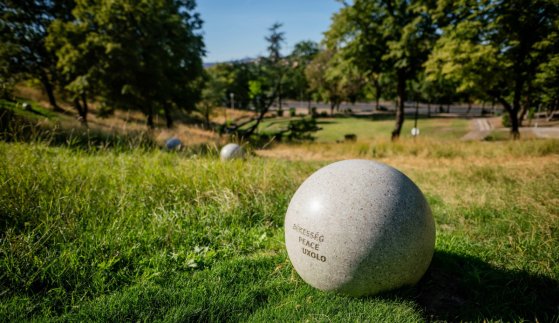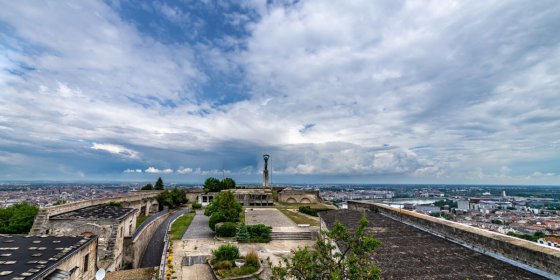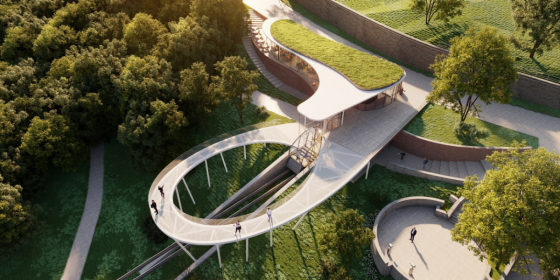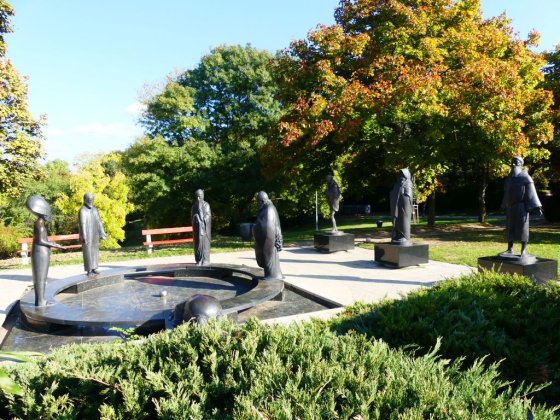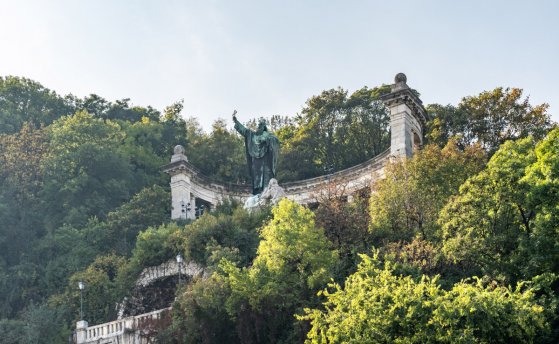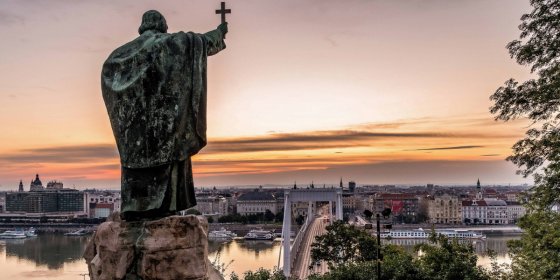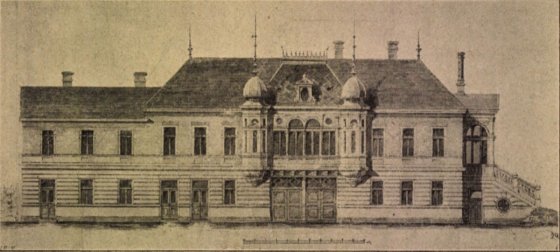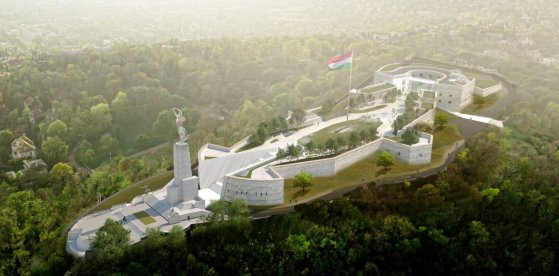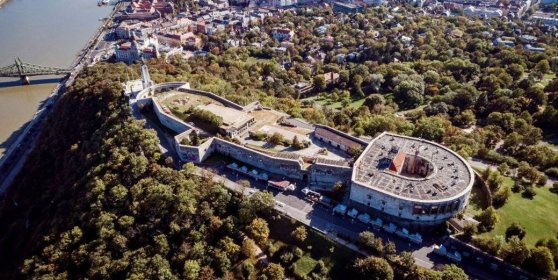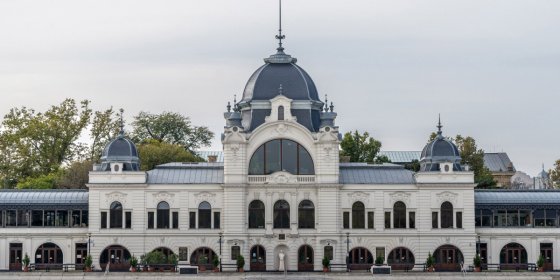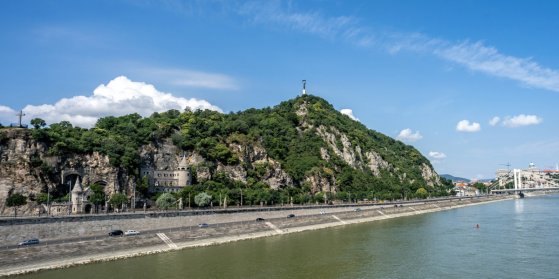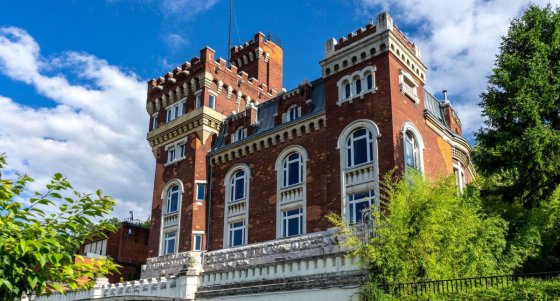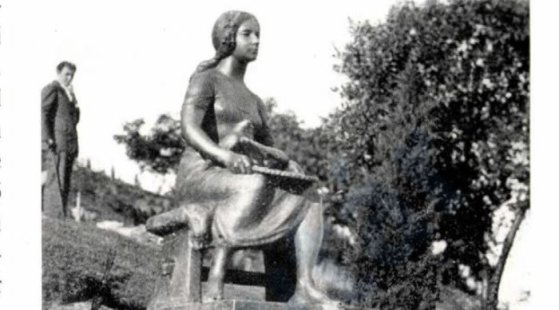 The „intertwined history” of the bridges and the city of Budapest
Which ideas and events have shaped the fate of bridges of Budapest and the cityscape? Alongside many other interesting facts, this question is also answered this newly published book by the Budapest City Archives, which introduces the history of bridges in Budapest.
The „intertwined history” of the bridges and the city of Budapest
Which ideas and events have shaped the fate of bridges of Budapest and the cityscape? Alongside many other interesting facts, this question is also answered this newly published book by the Budapest City Archives, which introduces the history of bridges in Budapest.
Gellért Hill
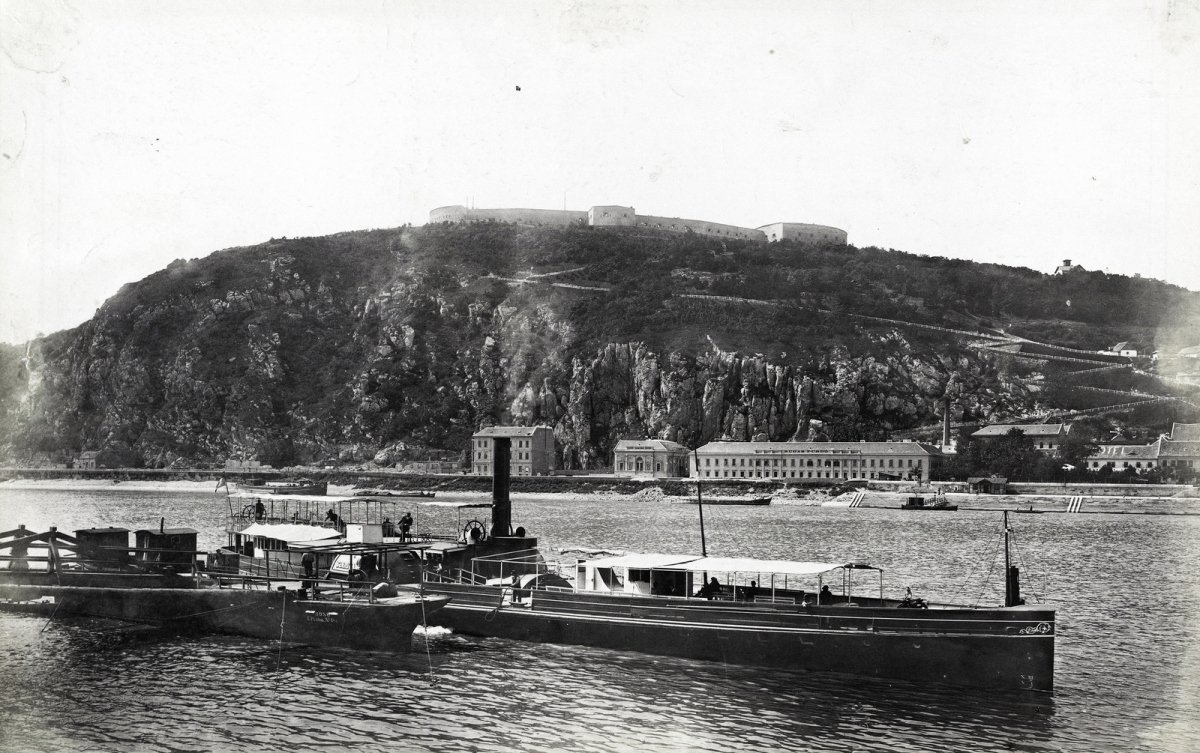 Budapest acquired two hated buildings 125 years ago
Budapest acquired two hated buildings 125 years ago
October 21, 2022 at 10:00 AM
Several well-known symbols of oppression of Hungary and Budapest stood in the centre of the capital even in the decades after the Austro-Hungarian Compromise. One is the Citadella fortress built to intimidate the city after the defeat of the War of Independence on top of Gellért Hill, and the other is the huge New Building, also known as the prison of soldiers of the 1848 national army, with a bad memory, on the site of today's Szabadság Square. Budapest acquired these two military facilities in October 1897. The New Building was demolished in a short time, but they could not do anything with the Citadella for decades.
The Nelson Mandela Park on Gellért Hill was handed over
July 19, 2022 at 12:00 PM
Although many people protested against it earlier, the Nelson Mandela Park was handed over on the northern slope of Gellért Hill, in the area between the Philosophers' Garden and Hegyalja street. The Capital City local council timed the handover to the 104th birthday of the first colored president of the Republic of South Africa.
The permit is in place, preparations for the construction of the Gellért Hill cable car can continue
January 19, 2022 at 6:00 PM
Gellérthegyi SIKLÓ Kft. Has received a new building permit, so the preparations for the construction of the cable car can continue. According to the plans, when the track is completed, the vehicles will reach the top of the hill from the Hegyalja road terminal in 72 seconds. The investment may be completed in the second half of 2023.
The construction of the Gellért Hill cable car received an environmental permit
November 25, 2021 at 5:00 PM
The construction of the planned cable car on Gellért Hill received the environmental permit. The permit emphasizes that the works must comply with a number of nature protection regulations and world heritage protection requirements.
The Garden of Philosophy was inaugurated on Gellért Hill 20 years ago
October 18, 2021 at 10:00 AM
The sculpture composition called Garden of Philosophy has been standing on Gellért Hill for twenty years now. The work, which depicts the world's leading thinkers and founders of world religions, was donated to Budapest by Nándor Wagner, a sculptor of Hungarian origin living in Japan.
The colonnade of the statue of St. Gellért is being renovated
October 2, 2021 at 12:00 PM
The reconstruction of the column surrounding the statue erected in 1904 will be carried out by the Budapest Gallery, and the works are expected to last until the end of the year. In addition, the Monument to the Displaced and the 56th Memorial Column in Tabán will be renewed.
From whom Gellért Hill was named: the educator of prince Emeric died a martyr's death 975 years ago
September 24, 2021 at 9:03 AM
The name and legend of Saint Gellért is known not only to the Hungarians, but certainly to the tourists visiting here. If for no other reason, because the Gellért Hill statue of the first martyr of Christian Hungary is an integral part of the Budapest cityscape; the bishop has been holding the cross high above the capital for more than a hundred and ten years. The memory of Bishop Gellért, who died a martyr's death in 975 years, is preserved not only on the mountain, but also in many other works in the capital.
Ferenc Novák designed first an electric cogwheel railway and then a hydraulic funicular on Gellért Hill
July 29, 2021 at 2:00 PM
In the last decade of the 19th century, architect Ferenc Novák presented to the public the plan of the Gellért Hill funicular, which was connected with the intention to demolish the Citadel. According to Novák's idea, not only a funicular would have been built on Gellért Hill, but also a lookout, an illuminated statue and the National Pantheon as a millennium monument. The architect would have built first an electric cogwheel railway and then a hydraulic funicular, for which he also received permits. Yet his dream did not come true.
A new Citadel rises – Parks and terraces for visitors
April 22, 2021 at 3:00 PM
After the archaeological excavations, the reconstruction of the Citadel and its immediate surroundings has begun. Design renders show that the walls of the former fortress are to be opened in several places. New lookout terraces and will be created in the fortress and courtyard. The investment will be completed by 2023.
Citadel renovation to create 1500 square-metre exhibition space
February 1, 2021 at 1:00 PM
Several lifts, a pool, a 1,500-square-metre exhibition space and a twenty-metre flagpole will also be installed in the Citadel as a part of the current reconstruction, which will see the walls and gardens of the structure completed in 1854 completely renewed. The work will be carried out by the consortium of ZÁÉV and Market Zrt. for 14.8 billion HUF.
Imre Francsek – Lesser known architect behind City Park Skating Rink died 100 years ago
October 30, 2020 at 11:00 AM
The architect behind the ice skating rink in City Park, the colonnade of the Saint Gerard statue, the Buda Civic Casino and several residential buildings. If all his plans had been carried out, Calvin Square and Szabadság Square would be very different. At one point in his career, he even proposed pushing the entire Dreher Palace a few metres to the side. Imre Francsek died one hundred years ago.
A neglected landmark – A walk on Gellért Hill
August 1, 2020 at 1:30 PM
Despite it being a symbol of Budapest, a popular walking destination, and a nature reserve in the city's heart, Gellért Hill has been neglected for decades. Unfortunately, the situation is beyond slight renovation – a complete replanning and reconstruction are needed.
A little Genoa on Gellért Hill
July 21, 2020 at 11:00 AM
The Hegedüs Villa or originally the Schoch Villa is well known in Budapest, although few people know by its name. The mass of the building rises above the statue depicting Saint Gerard and the waterfall, so it is immediately noticeable when people drive from Pest to Buda across Erzsébet Bridge. Its medieval forms are less typical of early 20th century Hungarian architecture, according to urban legend, it is a copy of an Italian building. Pestbuda now reveals if the legend is true.
Lost to the World War – In the footsteps of a missing Cinderella statue
July 20, 2020 at 2:00 PM
In the playground on Gellért Hill, children would once quench their thirst at a fountain that depicted Cinderella. So in the 1920s, Budapest decided to order several fountains and statues depicting famous characters from stories. The goal was to ensure that the fountains would not only quench children's thirst but support their aesthetic sense.
More articles
 The „intertwined history” of the bridges and the city of Budapest
Which ideas and events have shaped the fate of bridges of Budapest and the cityscape? Alongside many other interesting facts, this question is also answered this newly published book by the Budapest City Archives, which introduces the history of bridges in Budapest.
The „intertwined history” of the bridges and the city of Budapest
Which ideas and events have shaped the fate of bridges of Budapest and the cityscape? Alongside many other interesting facts, this question is also answered this newly published book by the Budapest City Archives, which introduces the history of bridges in Budapest.
 The Bridge Report, which brought a turning point in the history of Budapest
A travel report that changed the history of Pest and Buda, as well as Hungary. The little book contributed to the change of half a thousand years of legal customs and the implementation of an investment of unprecedented size and technical quality. This book was The Bridge Report [Hídjelentés in Hungarian].
The Bridge Report, which brought a turning point in the history of Budapest
A travel report that changed the history of Pest and Buda, as well as Hungary. The little book contributed to the change of half a thousand years of legal customs and the implementation of an investment of unprecedented size and technical quality. This book was The Bridge Report [Hídjelentés in Hungarian].
 Drama on the university wall - The heroic monument was planned 95 years ago
In the constant hustle and bustle of the Egyetem Square in Pest, the students may not even notice the monument that decorates the short section of wall between the church and the central building of ELTE. However, it commemorates their predecessors, the heroes who fought for their country in World War I, and those who heroically helped them. The first design of the dramatically collapsing soldier was born in 1928, ninety-five years ago.
Drama on the university wall - The heroic monument was planned 95 years ago
In the constant hustle and bustle of the Egyetem Square in Pest, the students may not even notice the monument that decorates the short section of wall between the church and the central building of ELTE. However, it commemorates their predecessors, the heroes who fought for their country in World War I, and those who heroically helped them. The first design of the dramatically collapsing soldier was born in 1928, ninety-five years ago.

